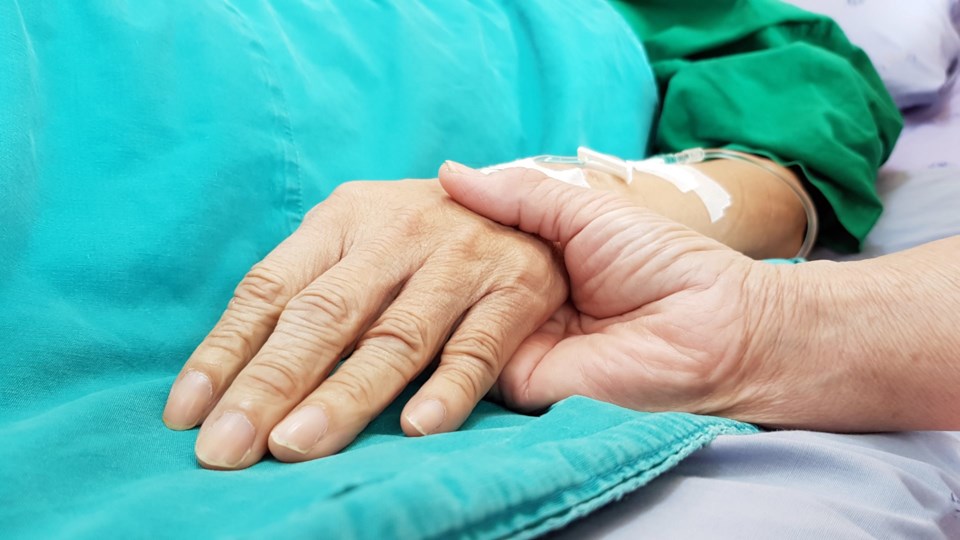The federal government chose a right-to-die advocacy group to help implement its medical assistance in dying legislation. It’s a classic case of regulatory capture, otherwise known as letting the foxes guard the henhouse.
In the , the federal government devoted several paragraphs to praising the Canadian Association of MAiD Assessors and Providers (CAMAP).
“Since its inception in 2017, (CAMAP) has been and continues to be an important venue for information sharing among healthcare professionals and other stakeholders involved in MAiD,” reads the report.
With $3.3 million in federal funding, “CAMAP has been integral in creating a MAiD assessor/provider community of practice, hosts an annual conference to discuss emerging issues related to the delivery of MAiD and has developed several guidance materials for healthcare professionals.”
Six clinicians in British Columbia formed , a national non-profit association, in October 2016. These six right-to-die advocates for MAiD in 2017 other physician organizations.
The educate clinicians on their “professional obligation to (bring) up MAiD as a care option for patients when it is medically relevant and they are likely eligible for MAiD.” CAMAP’s guidelines apply to Canada’s , and the broader healthcare workforce of , wherever patients are involved.
The rise of CAMAP overlaps with right-to-die advocacy work in Canada. According to , writing in the Globe and Mail, CAMAP “follow(ed) in the steps of Dying with Dignity,” an advocacy organization started in the 1980s, and “became both a public voice and a de facto tutoring service for doctors, organizing information-swapping and self-help sessions for members.”
Prime Minister Justin Trudeau tapped this “tutoring service” the MAiD program. CAMAP appears to follow the steps of Dying with Dignity because the same people lead both groups. For example, Shanaaz Gokool, a current , of Dying with Dignity from 2016 to 2019.
A founding member and of the board of directors of CAMAP is also a member of Dying with Dignity’s clinician advisory council. One of the advisory is also a member of Dying with Dignity’s board of directors, as well as a moderator of the CAMAP MAiD Providers Forum. The advisory council co-chair the boards of CAMAP and Dying with Dignity at the same time.
Overlap between CAMAP and Dying with Dignity includes , board members (past and present), moderators, and more, showing that a small right-to-die advocacy group birthed a tiny clinical group, which now leads the MAiD agenda in Canada. This is a problem because it means that a small group of activists exert outsized control over a program that has serious implications for many Canadians.
George Stigler, a Nobel-winning economist, in the 1960s, showing how government agencies can be captured to serve special interests.
Instead of serving citizens, focused interests can shape governments to serve narrow and select ends. Pharmaceutical companies work hard to that regulate their industry. Doctors demand government regulations – couched in the name of patient safety – to decrease competition. The list is endless.
Debates about social issues can blind us to basic governance. Anyone who criticizes MAiD governance is seen as being opposed to assisted death and is shut out of the debate. At the same time, the Canada and trying to figure out what is going on with MAiD and why we than other jurisdictions offering assisted suicide.
Canada moved from physician-assisted suicide to becoming a world leader in after assisted death in the space of just six years.
In 2021, Quebec surpassed the Netherlands to in per capita deaths by assisted suicide, with 5.1 percent of deaths due to MAiD in Quebec, 4.8 percent in the Netherlands and 2.3 percent in Belgium. In 2022, Canada extended its lead: MAiD now represents 4.1 percent of all deaths in Canada.
How did this happen so fast? Some point to instead of facing Canada’s world-famous for care. Others note a lack of . No doubt many factors fuel our passion for MAiD, but none of these fully explain the phenomenon. In truth, Canada became world-famous for euthanasia and physician-assisted suicide because we put right-to-die advocates in charge of assisted death.
Regardless of one’s stance on MAiD, is a well-known form of corruption. We should expect governments to avoid obvious conflicts of interest. Assuming Canadians want robust and ready access to MAiD (which might assume too much), we should at least keep the right-to-die foxes out of the regulatory henhouse.
Shawn Whatley is a physician, past president of the Ontario Medical Association, and a Munk senior fellow at Macdonald-Laurier Institute. He is the author of .
©




